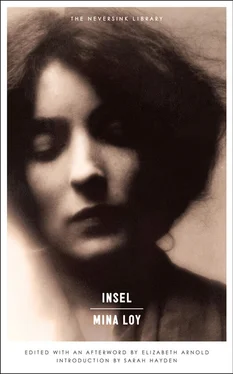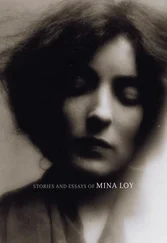I was by no means the only reader of books on board the Neversink. Several other sailors were diligent readers, though their studies did not lie in the way of belles-lettres. Their favourite authors were such as you may find at the book-stalls around Fulton Market; they were slightly physiological in their nature. My book experiences on board of the frigate proved an example of a fact which every book-lover must have experienced before me, namely, that though public libraries have an imposing air, and doubtless contain invaluable volumes, yet, somehow, the books that prove most agreeable, grateful, and companionable, are those we pick up by chance here and there; those which seem put into our hands by Providence; those which pretend to little, but abound in much.
— HERMAN MELVILLE, WHITE JACKET
INTRODUCTION BY SARAH HAYDEN
“It is the nature of individuality to look upon the rest of the world in the light of an audience. I got the idea that ‘an impression is to be made.’ ”
—“Islands in the Air”
Born Mina Gertrude Lowy, a self-nominated “Anglo-mongrel,” in London in 1882, Mina Loy died an American citizen in 1966. Between those dates, she was resident of Jugendstil Munich (1900), Futurist Florence (1907–1916), Dada-enfevered New York (1916–1917) and Surrealist Paris (1923–1936), making interstitial appearances in Paris (1903–1906), Mexico (1918), Weimar Berlin (1922) and Freud’s Vienna (1922), among other places. Relocating finally from Europe to New York in 1936, she was the unofficial artist-in-residence on the Bowery when New York was inaugurated as capital city of the postwar art world. Though the stamps in her passport furnish the coordinates to map the development of twentieth-century art, Loy was not just fortuitously “present” in these locations at the zero hour of their modernist fluorescence. She engaged with these art scenes neither as onlooker nor acolyte but as an acutely critical cross-media artist. Leaving New York in 1953, she made her last works in the barely nascent art town of Aspen; Loy’s burial there in 1966 left her body at the site of yet another significant episode in the history of the transatlantic avant-gardes.
It has become something of a commonplace to populate the opening of any portrait of Loy with globe-wrapping litanies. Though the inventory device might be hackneyed, the listing of multiple cities, movements, artistic colocutors and art practices remains the only way to convey the multiplicities that characterize her formation and her work. There have been many Loys; more are emerging. On the event of their marriage in 1918, the Dada poet-pugilist Arthur Cravan declared: “Now I have caught you. I am at ease” (“Excerpts from ‘Colossus’ ”). Cut short by his mysterious disappearance that same year, their romance was absolute. For the rest of us, capturing Loy is neither possible nor even advisable. Slipping between textual avatars, she remakes herself as Imna Loy, Goy, Ova, Sophia and, in Insel , Mrs. Jones. Though much of her writing rehearses the contours of her biography, her predilection for imposture, anagram and factual distortion make slippery the lines between autobiography and fiction. Nowhere else are these distinctions so bewitchingly blurred as they are in this novel.
In life, the trajectory of Loy’s career saw her play overlapping roles as painter, poet, model, actor, archetypal Modern Woman, playwright, novelist, autobiographer, inventor, polemicist, designer, gallery agent and assemblagist. Galvanized by inconstant affinities with myriad systems of thought (including Christian Science, Hindu mysticism, Theosophy, Bergsonism, sexology, psychoanalysis) and innumerable species of avant-garde art-making, Loy was variously feted and forgotten. Through poverty, alienation and heartbreak, she remained a practicing artist, ever in evolution, to the end. Striving to impress the intensely modern emanations of her “isolate consciousness” (“Anglo-Mongrels”) upon the world, she proves herself, in Insel and beyond, a sophisticated commentator on creativity — an expert theorist of modern artisthood.
Loy first came to public attention as a painter at the 1904 Paris Salon d’Automne; in 1906 she was elected salonnier . This early recognition of her prowess as a painter was superseded, however, by her reputation as a poet. The recovery of Loy’s plastic arts production — which comprises drawings, paintings, sculptures and a remarkable body of assemblages — is at last underway. Perhaps our tardiness in coming to evaluate Loy’s visual art can be attributed to her pursuit, alongside it, of such a variegate span of other creative pursuits — for she also designed lampshades, and patented inventions both prosaic (a device for cleaning windows “from the inside out”) and fanciful (a corselet intended for the “alleviation of dowager’s hump”).
In her lifetime, what renown she attained derived predominantly from her activities as a poet. Between 1914 and 1962, her work was published in magazines and periodicals on both sides of the Atlantic, including Camera Work, Trend, Rogue, Others, Blind Man, The Dial, The Little Review, Contact, Playboy, transatlantic review, Pagany, Accent and View , and featured in anthologies such as the 1925 Contact Collection of Contemporary Writers and in Kreymborg’s 1930 Lyric America: An Anthology of American Poetry . Her first poetry collection, Lunar Baedecker , was published by Robert McAlmon’s Contact Editions in 1923, its title misspelled. In 1958, a new edition of her poems was published under Jonathan Williams’s Jargon imprint. Lunar Baedeker and Timetables corrected some of the 1923 edition’s errors, but introduced others. For too long, she was overlooked, blighted by the critical amnesia that commonly affects women writers, and that is endemic in treatments of Loy’s elusive, experimental ilk. In the last decades of the twentieth century, critics started to probe modernism’s margins, questioning received histories of literary communities and recovering forgotten figures. With the publication of Roger Conover’s editions of The Last Lunar Baedeker (1982) and his revised and comprehensively annotated The Lost Lunar Baedeker (1996), Loy’s literary legacy came, convulsively, back to life. Loy-alists rejoiced to see her back in print; today, their ranks are great and still growing.
In his introduction to the first edition of Insel , Roger Conover — Loy’s longtime editor, literary executor and curator — traced Loy’s posthumous evolution from “ ‘neglected’ poet” to one “whose reputation and readership are very much on the rise.” On the occasion of its re-publication, we find Loy securely instated among her rightful cohort — as a luminary of literary modernism. In 2011, Sara Crangle’s edition of the Stories and Essays of Mina Loy opened new vistas not only onto Loy’s heretofore submerged prosodic imagination but onto the principal preoccupations of her poetry. Crosscurrents exist between her poetry and prose that weren’t previously recognized: oppositions to censorship and social injustice implicit in her poetry are made explicit in her prose.
Where once she enjoyed only a refractory sort of fame-by-association, today the extent of Loy’s intellectual interplay with figures such as Ezra Pound, F. T. Marinetti, Giovanni Papini, Marcel Duchamp, Djuna Barnes, Gertrude Stein and William Carlos Williams eclipses the anecdotal. We have come to recognize that Loy was acutely attuned to the ways in which cosmopolitan avant-garde movements were attempting to reconstitute the artist’s role in modern society. Polemical texts such as “International Psycho-Democracy,” “In … Formation” and “Aphorisms on Futurism” give us her position papers on contemporary notions of artisthood. Her short prose pieces—“O Marcel … Otherwise I Also Have Been to Louise’s” and “Pas de Commentaires! Louis M. Eilshemius”—elucidate the depth of her ironic engagement with the performance politics of Duchampian New York Dada. Similarly, her conflicted response to the hypermasculine bombast of Florentine Futurism is rendered into the sharp satire of the early poems, “Brontolivido,” “Lion’s Jaws” and “The Effectual Marriage,” Loy’s investment in aesthetics led her to compose taut ekphrases—“Brancusi’s Golden Bird,” “Joyce’s Ulysses,” “The Starry Sky of Wyndham Lewis”—and acute portraits of her literary and artistic contemporaries, including Stein, Picasso, Pascin, Lewis and William Carlos Williams. The nature of genius fascinated her; in poetry, prose and drama, she anatomized its “curious disciplines” (“Apology of Genius”).
Читать дальше












